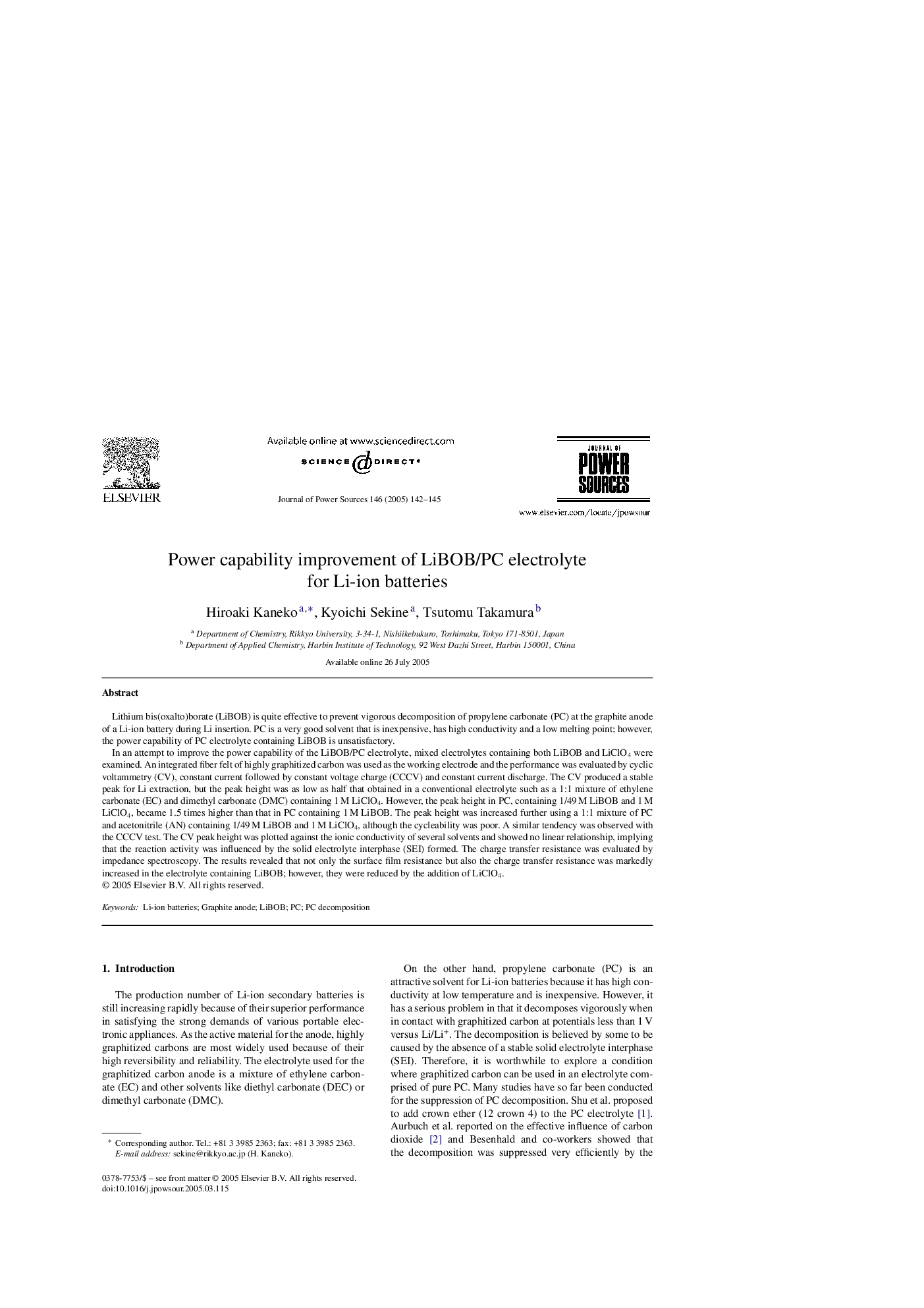| Article ID | Journal | Published Year | Pages | File Type |
|---|---|---|---|---|
| 9760297 | Journal of Power Sources | 2005 | 4 Pages |
Abstract
In an attempt to improve the power capability of the LiBOB/PC electrolyte, mixed electrolytes containing both LiBOB and LiClO4 were examined. An integrated fiber felt of highly graphitized carbon was used as the working electrode and the performance was evaluated by cyclic voltammetry (CV), constant current followed by constant voltage charge (CCCV) and constant current discharge. The CV produced a stable peak for Li extraction, but the peak height was as low as half that obtained in a conventional electrolyte such as a 1:1 mixture of ethylene carbonate (EC) and dimethyl carbonate (DMC) containing 1Â M LiClO4. However, the peak height in PC, containing 1/49Â M LiBOB and 1Â M LiClO4, became 1.5 times higher than that in PC containing 1Â M LiBOB. The peak height was increased further using a 1:1 mixture of PC and acetonitrile (AN) containing 1/49Â M LiBOB and 1Â M LiClO4, although the cycleability was poor. A similar tendency was observed with the CCCV test. The CV peak height was plotted against the ionic conductivity of several solvents and showed no linear relationship, implying that the reaction activity was influenced by the solid electrolyte interphase (SEI) formed. The charge transfer resistance was evaluated by impedance spectroscopy. The results revealed that not only the surface film resistance but also the charge transfer resistance was markedly increased in the electrolyte containing LiBOB; however, they were reduced by the addition of LiClO4.
Keywords
Related Topics
Physical Sciences and Engineering
Chemistry
Electrochemistry
Authors
Hiroaki Kaneko, Kyoichi Sekine, Tsutomu Takamura,
